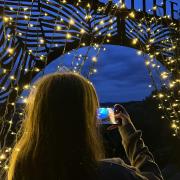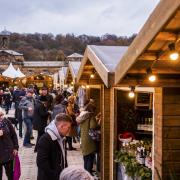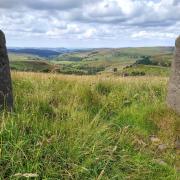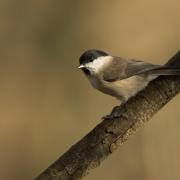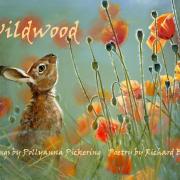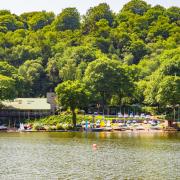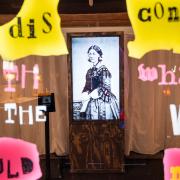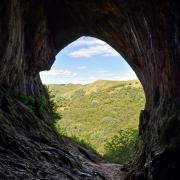Few birds have fired the public’s imagination more in the past few years than swifts.
These incredible transcontinental travellers scythe through the air, screaming above towns and villages across Derbyshire for a brief three-month visit to breed every summer.
Unfortunately, their numbers have taken a drastic downturn in the past few decades, which has been the impetus to galvanise a range of fantastic projects across the county.
Swifts are amazing birds, arguably the best adapted bird for flight because virtually everything is done on the wing.
They eat, drink, sleep and mate in the air, hardly ever touching the ground. The only time they have resort to landing on terra firma is to breed.
These aerial masters return to Britain after a gruelling 3,400 mile flight from Africa in late April and early May and the more experienced birds return to their old nest sites.

Before the advent of central heating and draft proofing, swifts had a multitude of breeding places in the gaps under the eaves of houses and in church towers.
However, the effective blocking up of these holes has seen a massive reduction in nest sites, and this is one reason for their alarming decline.
Another reason is that there has been a catastrophic decrease in their food. Swifts feed exclusively on flying insects, and a recent study in Germany, spanning 25 years, has spotlighted a whopping 75% drop in flying insects.
The study concentrated on the very best nature habitats, and it is extremely likely that, here in England, a 75% decline is actually a conservative estimate.
Due to the decrease in population, swifts were added to the red list in the 2021 UK Conservation Status Report, signalling that they are now considered to be of the highest conservation status.
Concerned Derbyshire residents have now risen to the challenge to the problem which faces our swifts with some amazing projects.

Each one has a champion, someone to inspire and coordinate local action, and in Bradwell, a charming and picturesque village in the Hope Valley, the instigators are Sally Pereira and Delphine Sayre.
Sally and Delphine formed the Bradwell Swift Group back in 2019, having been inspired and supported by other local groups, including the Hathersage Swift Group, and Andy Broardhurst of Derbyshire Swift Conservation.
Bradwell Swift Group now boast over 100 members and currently their main aims are to monitor swift nests in the village and, crucially, to make the house owners aware, so that they don't accidentally carry out building renovations which may harm the birds.
They also work hard to encourage the local community to garden and farm with wildlife in mind – such as avoiding the use of harmful insecticides – in order to encourage other local villages to survey and identify the location of nesting swifts.
Lastly, they aim to lobby the Government to install swift bricks in all new housing developments.

The most tangible and rewarding part of the project in Bradwell is the erection of nest boxes, which is where another passionate local resident, Lester Hartmann, has stepped in.
Lester, a retired joiner, moved to the Peak District and wanted to be involved with local wildlife conservation.
He was asked to build two barn owl and kestrel nest boxes, and from that initial request now runs a successful business making a multitude of nest boxes, including bespoke swift boxes.
To date, the Bradwell Group has erected boxes on 30 suitable homes throughout the village, and I was lucky to be able to spend a morning with the group as Lester and Ollie Hoffman installed the ultimate high-rise, swift des res in the village church tower.
Louise Petheram, who is the Vicar at St. Barnabas in Bradwell; St. Peter's in Hope; and St. Edmunds in Castleton, attended, as did Colin Biggin, from the Bradwell church committee.

Andy Broadhurst from Derbyshire Swift Conservation was also in attendance and Andy encouraged Lester to start to focus more on the installation of Swift boxes in belfries as they provide ideal nesting locations.
Adam Bakri was also present to witness the occasion. Adam is the biodiversity officer for Breedon, which owns Hope Cement Works, and has provided funding for Swift boxes which have recently been installed in no fewer than five churches in the Hope Valley.
After a bit of a scary climb into the bell tower with Lester I was able to watch in wonder as they carefully fitted the precision-made boxes into the ventilation slits of the tower.
The task was not made any easier as every quarter of an hour the church bells pealed out, and standing literally three feet away was definitely challenging!
Each box is built with a series of small nest chambers, pre-lined with feathers to entice the birds there to breed.

When the boxes had been installed, Lester added a remote speaker system into the bell tower. When swifts return every year, it is only the experienced birds - three years and older - which return to their previous year’s nest.
First year juvenile birds disperse across huge areas, and it may be that only one in every 100 returns to its birth site.
This means that juvenile swifts, first and second year birds, will be prospecting for a new breeding site, and the calls of swifts from occupied nest boxes attract them to fly in and investigate - hence the speaker system.
Once they have found the site, they probably won’t breed, but they now know it’s there, and will hopefully return in their third year and breed.
The Bradwell Swift Group is one of a number of groups doing fantastic work across Derbyshire, each playing its own part in helping the birds’ numbers to recover.
When the boxes were surveyed in March 2024, 16 had been used and another nine sites showed encouraging evidence of prospecting swifts. A fantastic result.
Each year, as more boxes go up, hopefully these numbers will continue to rise and awareness is doing too - the Bradwell Group having recently taken part in the national Swift Awareness Week, which took place from June 29 to July 7.
Here, the group ran a swift stall outside Bradwell Post Office, providing more insight and information to passers by.
For more information on swift conservation, visit swift-conservation.org.




